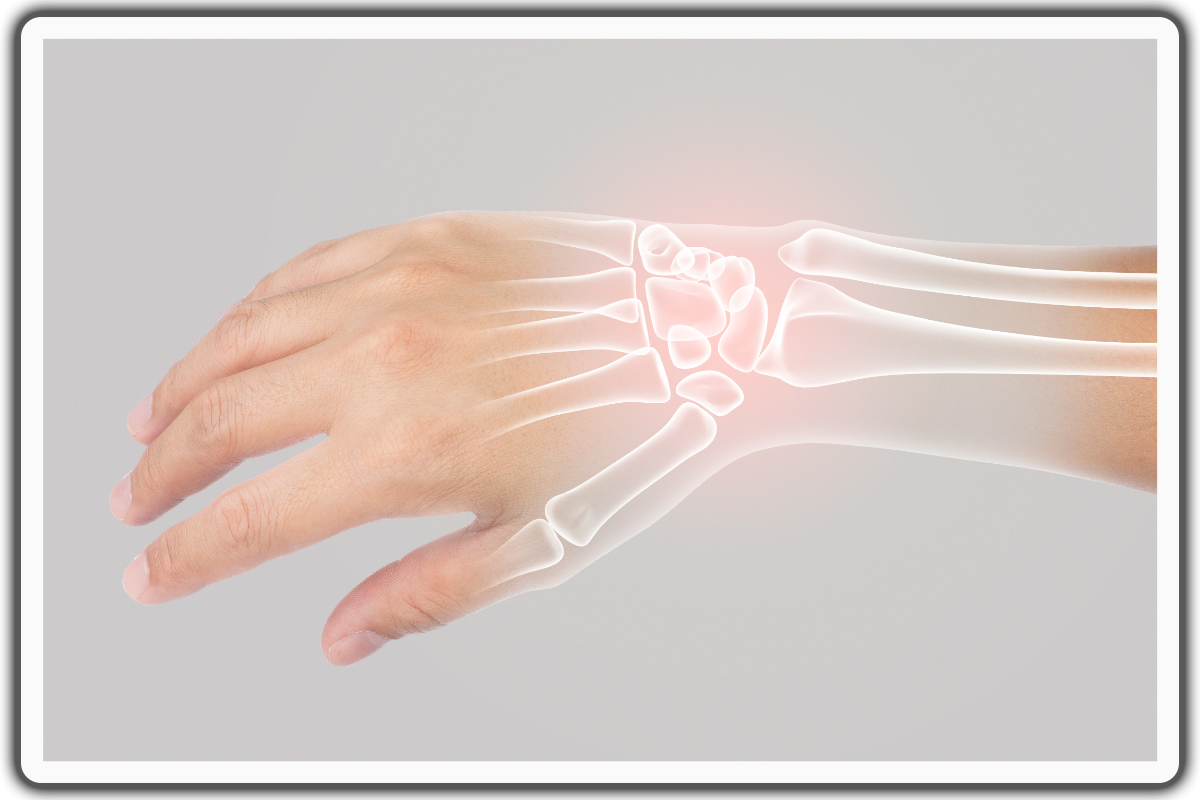
Wrist Pain Prevention Among Athletes: Essential Strategies
Wrist pain is a common issue that plagues many individuals, particularly those engaged in repetitive hand movements or strenuous physical activities, including sports. A study in the National Library of Medicine shows that wrist and hand injuries [¹] constitute about 25% of all sports injuries, underlining the critical need for preventive measures for wrist pain prevention.
These figures underscore the importance of adopting preventative strategies for wrist pain prevention for athletes to safeguard against wrist pain, ensuring both their immediate performance and long-term joint health are maintained.
Hence, this article presents athletes with essential strategies to prevent wrist pain to ensure maximum performance.
Understanding the Anatomy of the Wrist
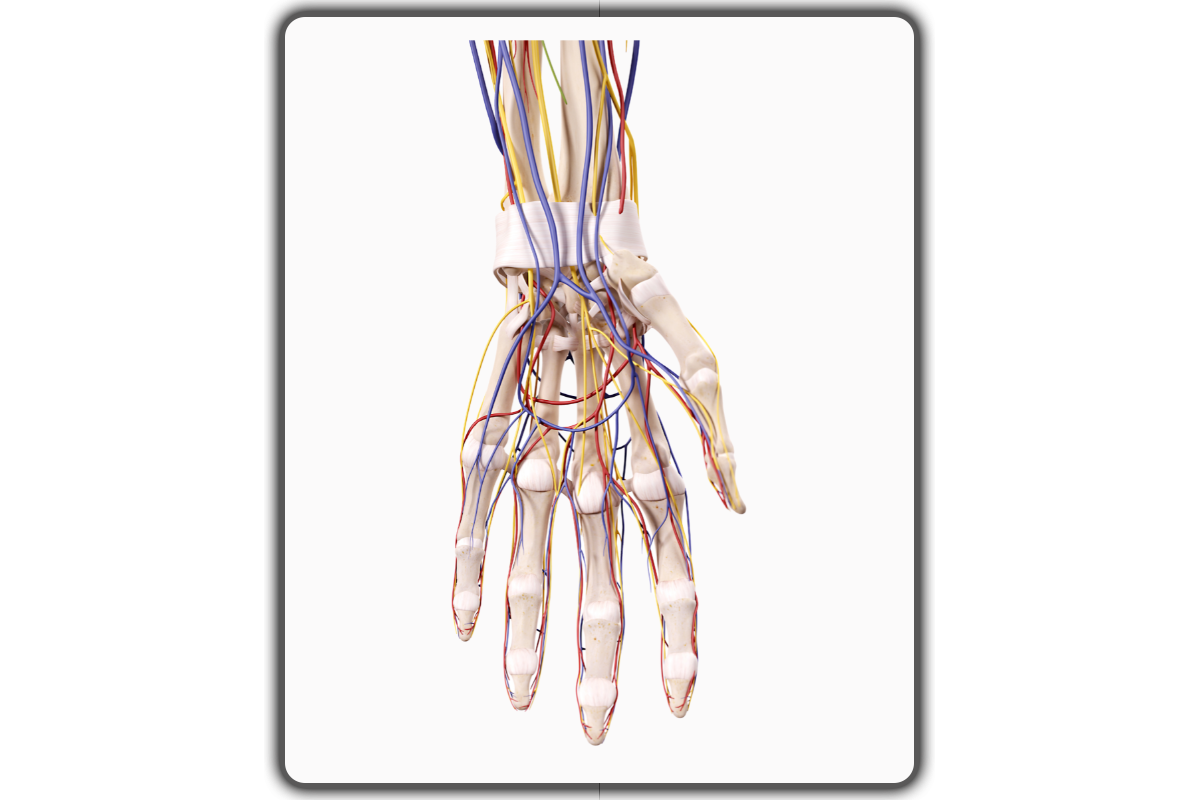
The intricate anatomy of the wrist, encompassing bones, ligaments, muscles, tendons, nerves, and blood vessels, functions in a finely tuned interplay to facilitate a wide range of movements and provide the structural stability necessary for daily activities.
The eight small bones called carpal bones form the wrist's foundation, allowing for the joint's flexibility and range of motion. Ligaments connect these bones, ensuring alignment and joint stability. Muscles originating in the forearm extend into the wrist and hand through tendons, enabling precise movements and strength.
The median nerve, running through the carpal tunnel, is crucial for sensory and motor functions, and the vascular network supplies essential nutrients and oxygen, ensuring tissue health.
This complex interaction allows the wrist to perform its pivotal role in hand and arm movements, highlighting the importance of each component in maintaining wrist function and overall upper limb dexterity.
The Risk of Wrist Injury in Sports

For athletes across various sports, the wrist is a critical yet vulnerable joint, often subjected to stresses that can lead to injury. While the wrist's complex anatomy allows for a wide range of motion and functionality, it also exposes athletes to several injury risks, particularly in sports requiring intense and repetitive wrist use.
A study published in the Journal of Hand Surgery reported that wrist injuries accounted for up to 9.6% of injuries subjected to wrist surgery [³], highlighting the prevalence and significance of this issue among athletes. Here are the six most common factors that could potentially harm or injure an athlete's wrist:
Repetitive Strain:
Athletes often perform repetitive motions, such as swinging a tennis racket or golf club, which can lead to overuse injuries in the wrist, causing conditions like tendonitis or stress fractures.
Impact Forces:
Sports that involve impact or direct force to the wrist, such as gymnastics or football, can lead to sprains, fractures, or contusions in the wrist area due to the high-impact forces experienced during falls or collisions.
Improper Technique:
Using incorrect form or technique while engaging in sports can place undue stress on the wrist joints, leading to strain or injury. This is common in sports requiring precise wrist movements, like tennis or weightlifting.
Inadequate Equipment:
Sports equipment not the right size or fit can contribute to wrist injuries. For instance, using a tennis racket with an improper grip size can increase the risk of wrist strain.
Insufficient Warm-up:
Not adequately warming up before engaging in physical activity can leave the wrist muscles and tendons more susceptible to injuries due to less flexibility and blood flow to the tissues.
Lack of Rest and Recovery:
Athletes often have rigorous training and competition schedules, but without adequate rest and recovery, the wrist can become overworked, increasing the risk of overuse injuries and strain.
Essential Strategies for Preventing Wrist Injuries

Proper Warm-Up
You have to go through a nice full body warmup, working up to your hands, starting with the legs, and then working out to the extremities to get some blood flow going and to get the soft tissues more pliable; they’re going to be more flexible that way they’re going to respond better to. Gentle stretching and gradual wrist exercises can prepare the muscles and ligaments for more intense activity.
Moreover, completing a warm-up [²] has been shown to improve performance. Such improvements were demonstrated across different sports.
Strength Training
Include exercises that target enhancing the muscles surrounding the wrist and forearm. Stronger muscles provide better support and reduce the likelihood of injuries due to overuse or sudden impact. A study suggests finger flexion [⁴] exercises to strengthen the hands by increasing muscle activity in both the flexor and extensor musculature of the forearm.
Technique Optimization
Work with certified coaches or trainers to ensure your sport's techniques are biomechanically sound, minimizing undue stress on the wrist. Correct technique is crucial in sports like tennis, golf, and weightlifting.
Use Appropriate Gear
Ensure that the equipment used is suitable for your size and skill level. For example, using a racket or club with the correct grip size can prevent excessive strain on the wrist, can contribute to wrist pain prevention.
Regular Breaks
Take regular breaks during training and competition to prevent overuse injuries. Adequate rest periods allow the wrist to recover and can prevent wrist injury due to joint stress.
Seek Professional Advice
Although not all wrist pain requires medical attention, if persistent wrist pain or discomfort occurs, consult with a sports medicine specialist or a physical therapist for a proper diagnosis and personalized wrist pain prevention strategies. Early intervention can prevent minor issues from becoming serious injuries.
The Risk of Neglecting Wrist Pain
Addressing wrist pain is crucial for maintaining overall well-being and functional capacity. Sometimes, individuals might downplay the severity of wrist discomfort, thinking it's due to minor strain or temporary fatigue. However, this kind of oversight can lead to significant consequences.
Ignoring the pain in this intricate joint can lead to various chronic conditions. For instance, persistent discomfort could signal a developing carpal tunnel syndrome, where symptoms include numbness, tingling sensation, or weakness in the hand. Another potential issue is osteoarthritis, marked by stiffness, swelling, and joint pain. There's also the risk of tendonitis, which can cause swelling and acute pain with movement.
Experiencing wrist pain may also be a symptom of Rheumatoid arthritis, a disorder in which the body's immune system attacks its tissues. If one wrist is affected, the other one usually is, too.
Leaving these symptoms unchecked can result in a diminished range of motion and prolonged discomfort and could severely impact one's quality of life and ability to perform daily activities efficiently.
Thus, it's imperative to heed early warning signs and seek professional evaluation to promptly diagnose and address the root causes of wrist pain. By doing so, individuals can preserve the wrist's functionality, prevent long-term damage, and ensure continued participation in personal and professional endeavors without hindrance.
5 Best Wrist Pain Relief Exercises
1. Wrist Rotations
Begin in an upright standing position with your feet hip-width apart, maintaining good alignment in your head, shoulders, hips, and legs. Extend your arms in front of your body at shoulder level. Rotate your wrists in a small circular motion, progressing to bigger circles. Return to the starting position and repeat the movement in the opposite direction. Start with 1 set of 5 repetitions in each direction.
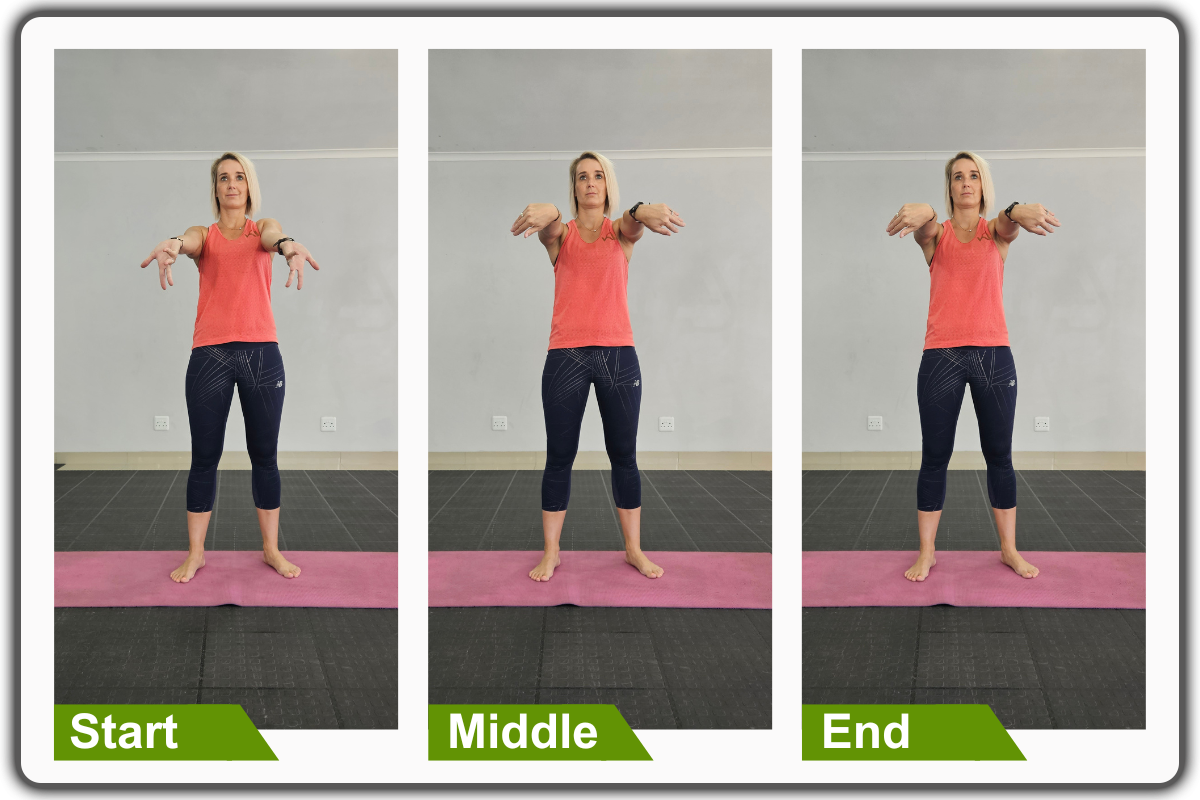
2. Wrist Extension
Begin in an upright standing position with your feet hip-width apart, maintaining good alignment in your head, shoulders, hips, and legs. Extend one arm in front of your body at shoulder level. Looking for a light stretch in the forearm area, lower your hand down so that your palm faces inward and your fingers point downward. Use your other hand to slowly push the back of your hand, intensifying the stretch. Hold this position for 5 seconds. Return to the starting position and repeat the movement on the other hand.
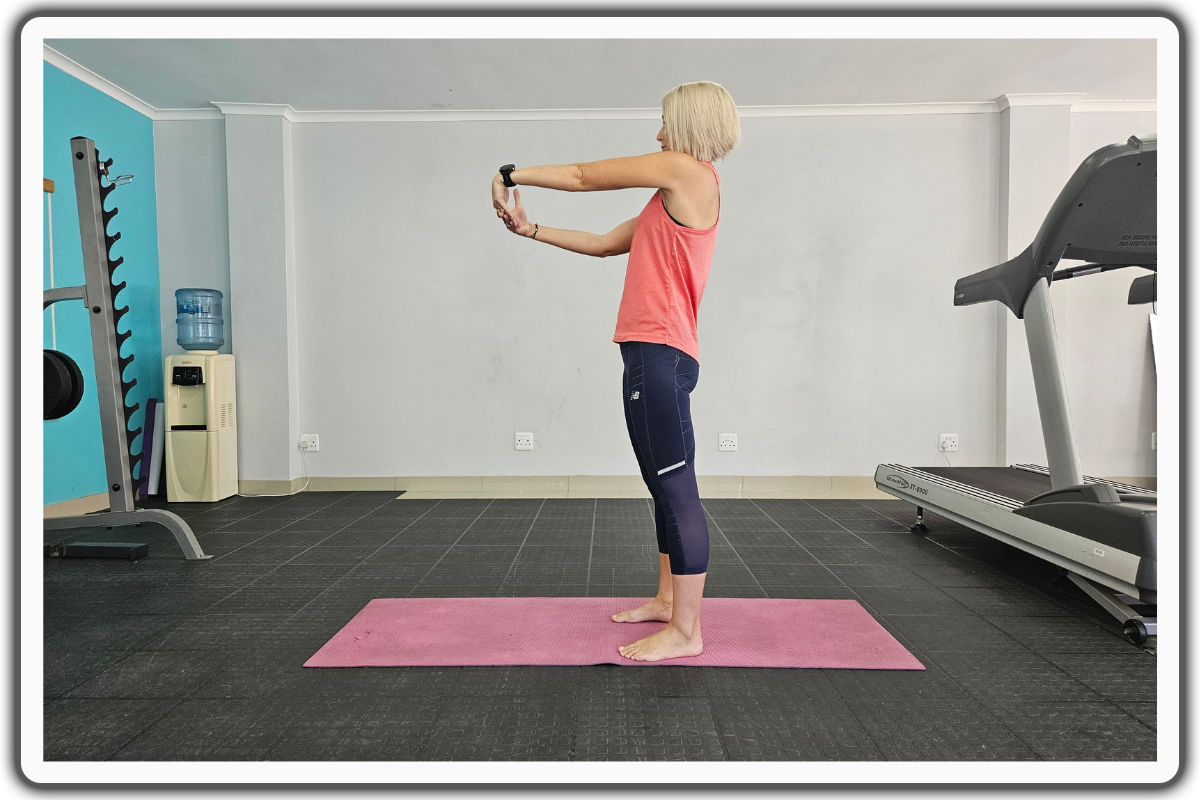
3. Wrist Flexion
Begin in an upright standing position with your feet hip-width apart, maintaining good alignment in your head, shoulders, hips, and legs. Extend one arm in front of your body at chest level. Lower your hand down so that your palm faces away from your body and your fingers point downward. Using your opposite hand, push your fingers back to intensify the stretch. Hold this position for 5 seconds. Return to the starting position and repeat the movement on the other hand.
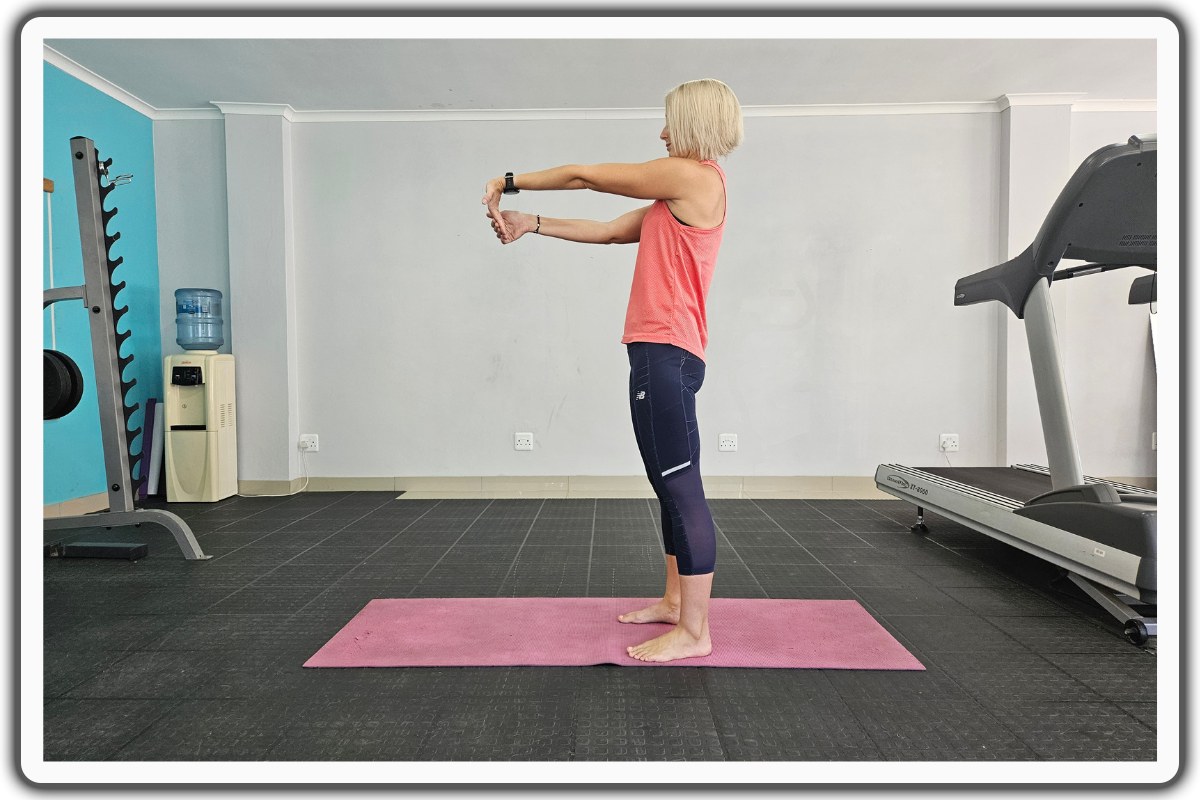
4. Wrist Massage
Begin in either a standing or sitting position. Lift one hand in front of your body with your elbow bent, then massage your wrist with your other hand to encourage circulation. Massage the sore spots in your wrist joint with your thumb in an up-and-down or small circular motion for about 10 seconds. Increase or decrease the pressure as needed. You may also rotate your wrist in a small circular motion, progressing to bigger circles to lubricate the joints. Repeat the movement on the opposite side.

5. Palm Massage
For this exercise, utilize a lacrosse ball, tennis ball, golf ball, or anything dense to massage your hands.
Begin in an upright standing position with your feet hip-width apart, maintaining good alignment with your head, shoulders, hips, and legs. Hold a tennis ball in both hands. Press your hands into the ball, working back and forth through your palm or rolling the ball in small circular motions. Increase or decrease the pressure as needed. Repeat the movement.
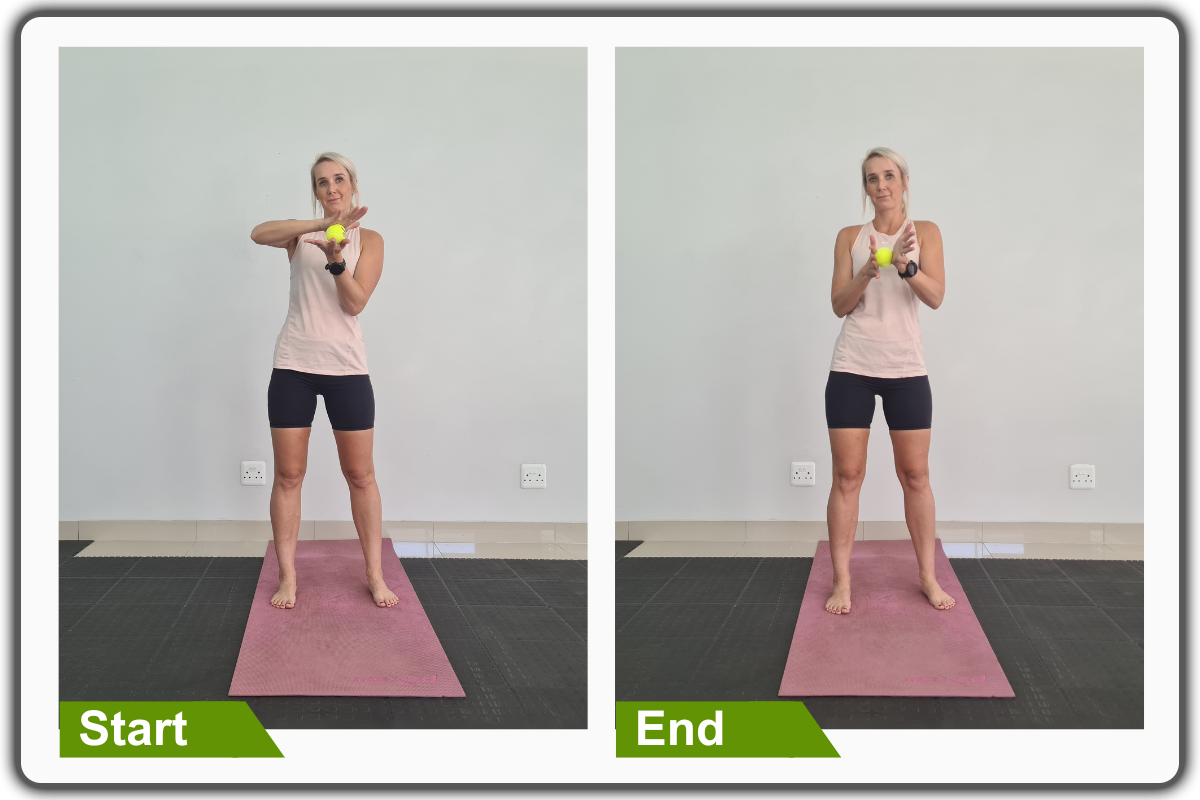
Conclusion
This guide prevents wrist pain and injuries, underscoring their significance in maintaining productivity and functionality. It's crafted with a commitment to empower individuals with the knowledge and strategies to safeguard their wrist health, an essential component for performing daily activities and professional duties effectively.
By diligently following the preventive measures, exercises, and ergonomic advice outlined in this guide, readers can significantly reduce the risk of wrist issues. This guide is a committed ally in wrist pain prevention, enabling individuals to uphold their wrist well-being, ensuring they can continue their pursuits without interruption, and fostering a proactive approach to maintaining an active and productive lifestyle.
References
Chan, J. J., Xiao, R. C., Hasija, R., Huang, H.-H., & Kim, J. M. (2023). Epidemiology of Hand and Wrist Injuries in Collegiate-Level Athletes in the United States. The Journal of Hand Surgery, 48(3), 307.E1-307.E7. https://doi.org/10.1016/j.jhsa.2021.10.011
Fradkin, A. J., Zazryn, T. R., & Smoliga, J. M. (2010). Effects of warming-up on physical performance: A systematic review with meta-analysis. Journal of Strength and Conditioning Research, 24(1), 140-148. https://doi.org/10.1519/JSC.0b013e3181c643a0
Lehman, J. D., Krishnan, K. R., Stepan, J. G., & Nwachukwu, B. U. (2020). Prevalence and Treatment Outcomes of Hand and Wrist Injuries in Professional Athletes: A Systematic Review. HSS Journal, 16(3), 280–287. https://doi.org/10.1007/s11420-020-09760-w
Vinstrup, J., Calatayud, J., Jakobsen, M. D., Sundstrup, E., Jørgensen, J. R., Casaña, J., & Andersen, L. L. (2018). Hand strengthening exercises in chronic stroke patients: Dose-response evaluation using electromyography. Journal of Hand Therapy, 31(1), 111-121. https://doi.org/10.1016/j.jht.2017.01.004
